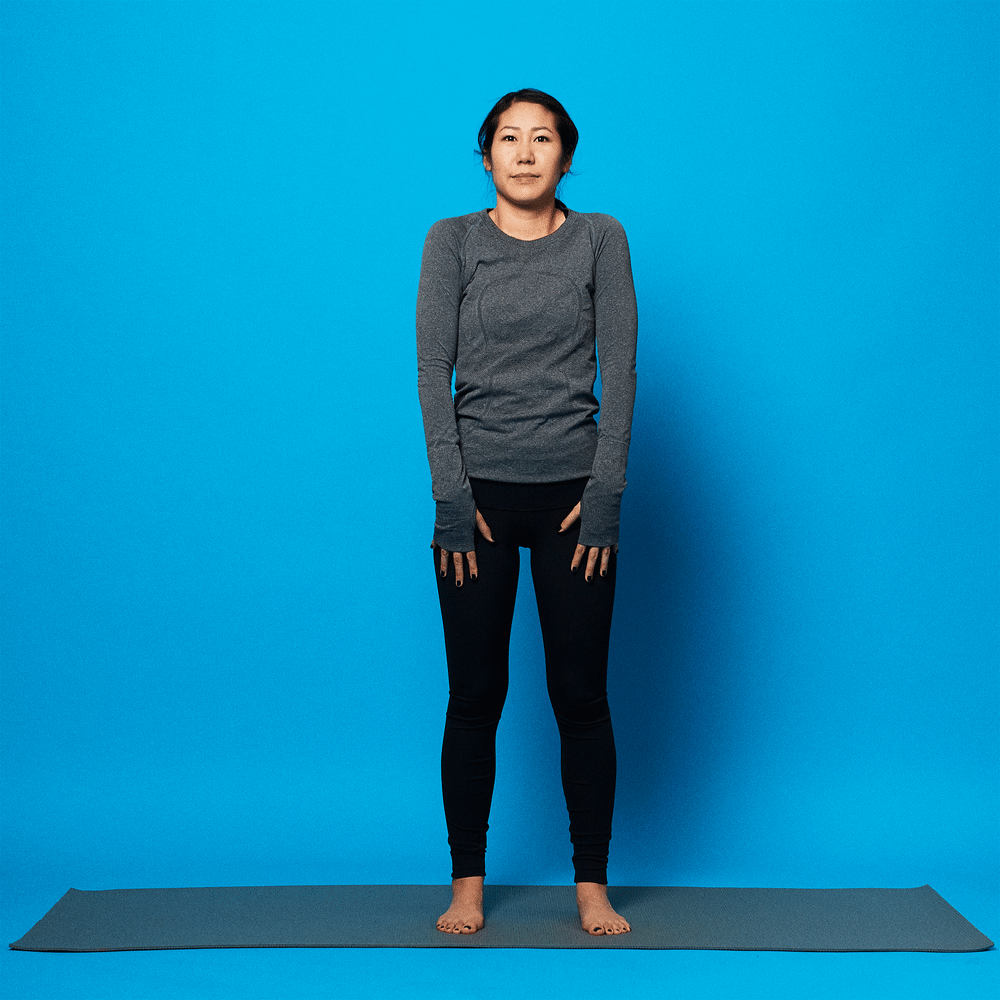Overview
If you’ve never done it before, yoga can feel intimidating. It’s easy to worry about not being flexible enough, in shape enough, or even just looking silly.
But yoga isn’t just those crazy arm-balancing, pretzel poses that are so popular on social media. It can be easy to get started and then work your way to more advanced poses.
Whether you want to learn some basic moves before you take a class, get some tips on where to begin with an at-home practice, or learn a few poses to improve flexibility, here’s a sequence that can get you started.
This sequence is the foundation for sun salutations. If you take any Vinayasa or flow class, you’ll most likely be working through this basic sequence.
This pose looks easy, because it’s basically just standing. But it’s the basis for all the other standing poses and inversions.
If you do this actively, you’ll be working your torso and legs, and you’ll be grounding yourself. This can be great for confidence and easing anxiety.
- Stand with your big toes barely touching, and your heels slightly apart. A good way to gauge your stance is to see if your second toes are parallel.
- Press into all four corners of your feet: big toe, little toe, right side heel, left side heel. As you push into your feet, feel how that engages your entire leg and keeps those muscles active.
- Take a deep breath and roll your shoulders up and back, releasing them down, so your shoulder blades are resting toward each other and your neck is long.
- Take a few deep breaths here. Close your eyes if you like.
When you’re ready to move on, take a deep breath.
- On your inhale, lift your arms to the sides and up, over your head.
- On your exhale, release your arms (either in front of your body or out to the side, like a swan dive) as you fold your torso over your legs. On the first time through, have at least a slight bend in your knees. No matter how flexible you are, your hamstrings will be cold when starting out, and you’ll want to be gentle with them.
- As you relax into the pose more, begin to straighten your legs as far as feels good. Anything that pinches or is a shooting pain should immediately stop your movement. Let gravity do the work here — don’t pull yourself down and try to force the fold.
- You can put your hands on your shins, your feet, or the floor. This passively lengthens your spine and your hamstrings, and it’s also a great way to work on balance.
This is a very active pose that works all the muscles of your front body.
- From Forward Fold, put your hands flat on the floor, bending your knees as much as needed to do so. Step back one leg at a time, until you’re in a high Plank Pose.
- Press into your hands, keep your legs parallel and engaged, and pull your bellybutton toward your spine.
- Take a few deep breaths here, working your core and your arms.
It’s easy to drop a little too much and get “banana back” or to hunch your shoulders. A good way to figure this pose out as a beginner is to get a friend to look at the shape you’re making from the side.
Your upper body, from your hands on the floor, up to your hips, should be relatively straight, allowing for some curves due to natural spine curves.
This pose elongates your spine, stretches your back leg muscles, and aids in digestion. Since it’s a mild inversion, it can release stress, help with headaches, and calm the nervous system.
- From Plank Pose, push into your hands and lift your hips up and back on the inhale. One thing that can be tricky with this pose is, again, keeping your shoulders engaged but not working too hard, and keeping a neutral spine.
- Your legs should be straight, and your heels working toward the floor. There will probably be some space between your heels and the floor. You could be very flexible, but if your legs are a bit on the long side, you probably won’t have your heels all the way to the floor. That’s fine. Keep your legs active and heels reaching toward the ground.
- Your first time in this pose, pedal out your feet a little to warm up your leg muscles.
In any yoga class, this is a good pose to come to if you want to rest and reset your nervous system.
- In Downward-Facing Dog, take a deep breath. On the exhale, release your knees to the floor, pull your hips back to your heels, and rest your forehead on the floor.
- You can either leave your arms stretched in front of you or pull them next to your body, hands resting palms up near your feet.
- This is a restorative pose, so adjust it to your needs. If you want to widen your knees a bit, do so. Like all forward folds, this pose is nurturing. It relaxes your spine, shoulders, and neck, and massages your internal organs.
Gretchen Stelter began her yoga journey after she realized that she loved working as an editor and writer who sat at her computer all day, but she didn’t love what it was doing for her health or her general wellness. Six months after finishing her 200-hour RYT in 2013, she went through hip surgery, which suddenly gave her an entirely new perspective on movement, pain, and yoga, informing her teaching and her approach.







